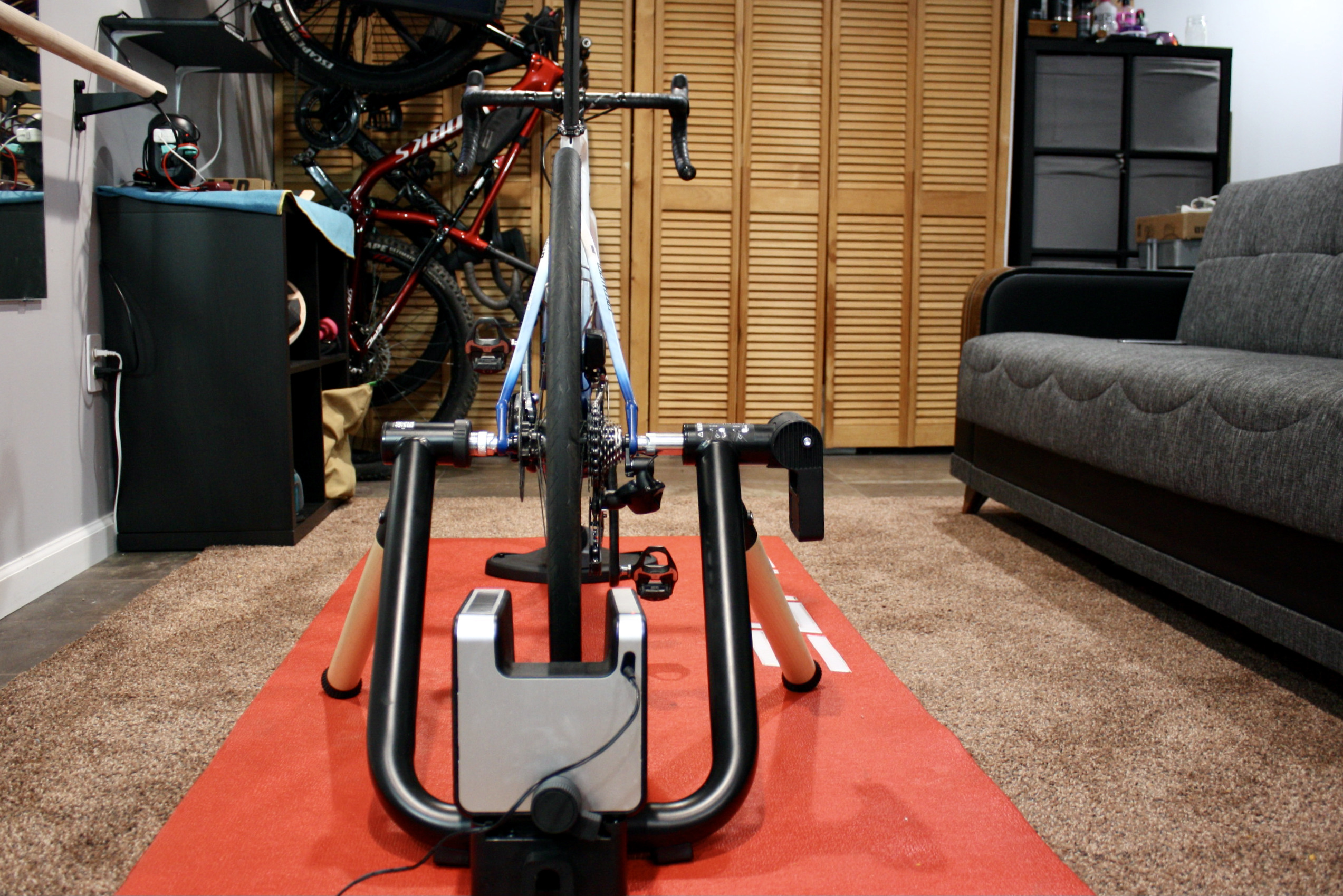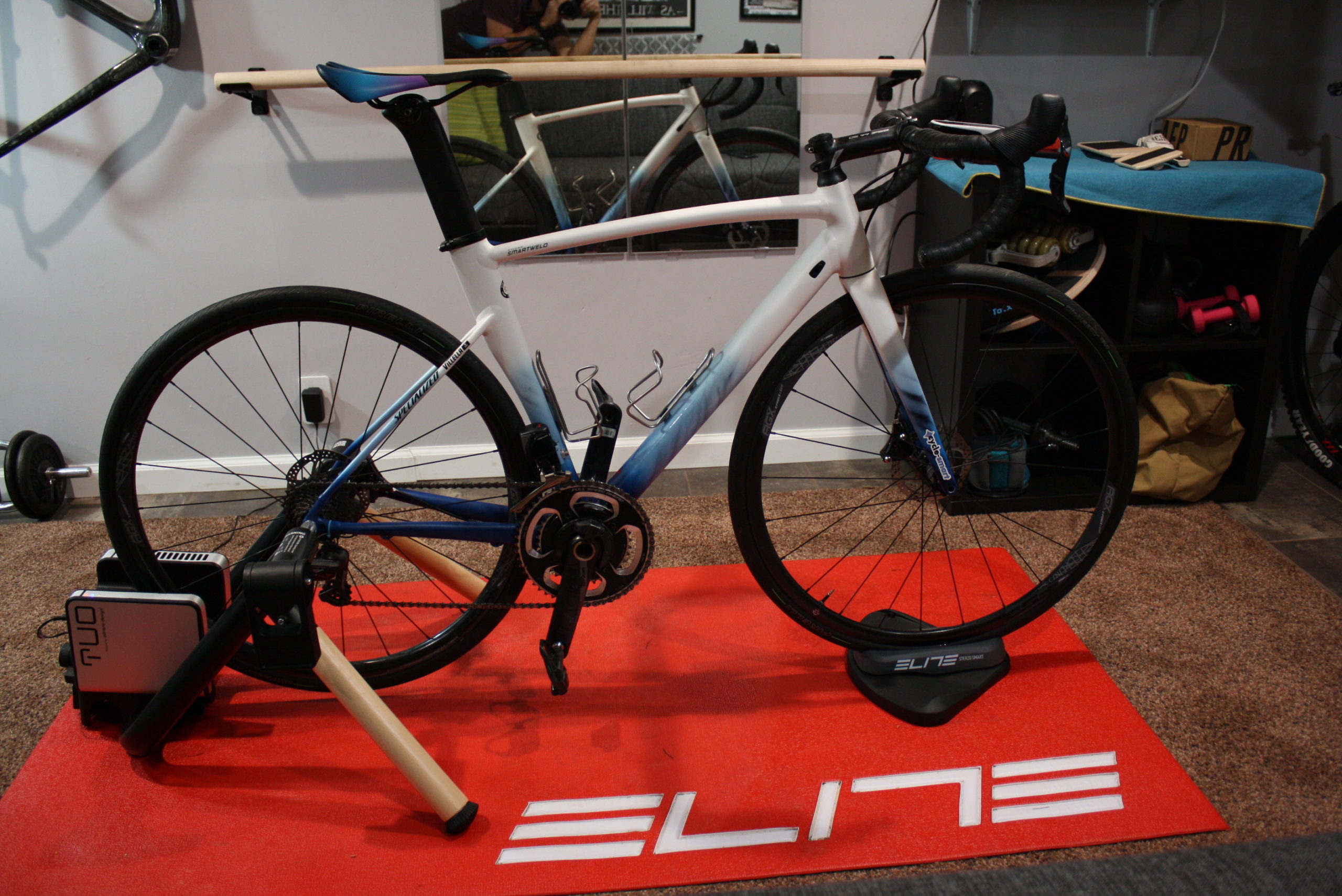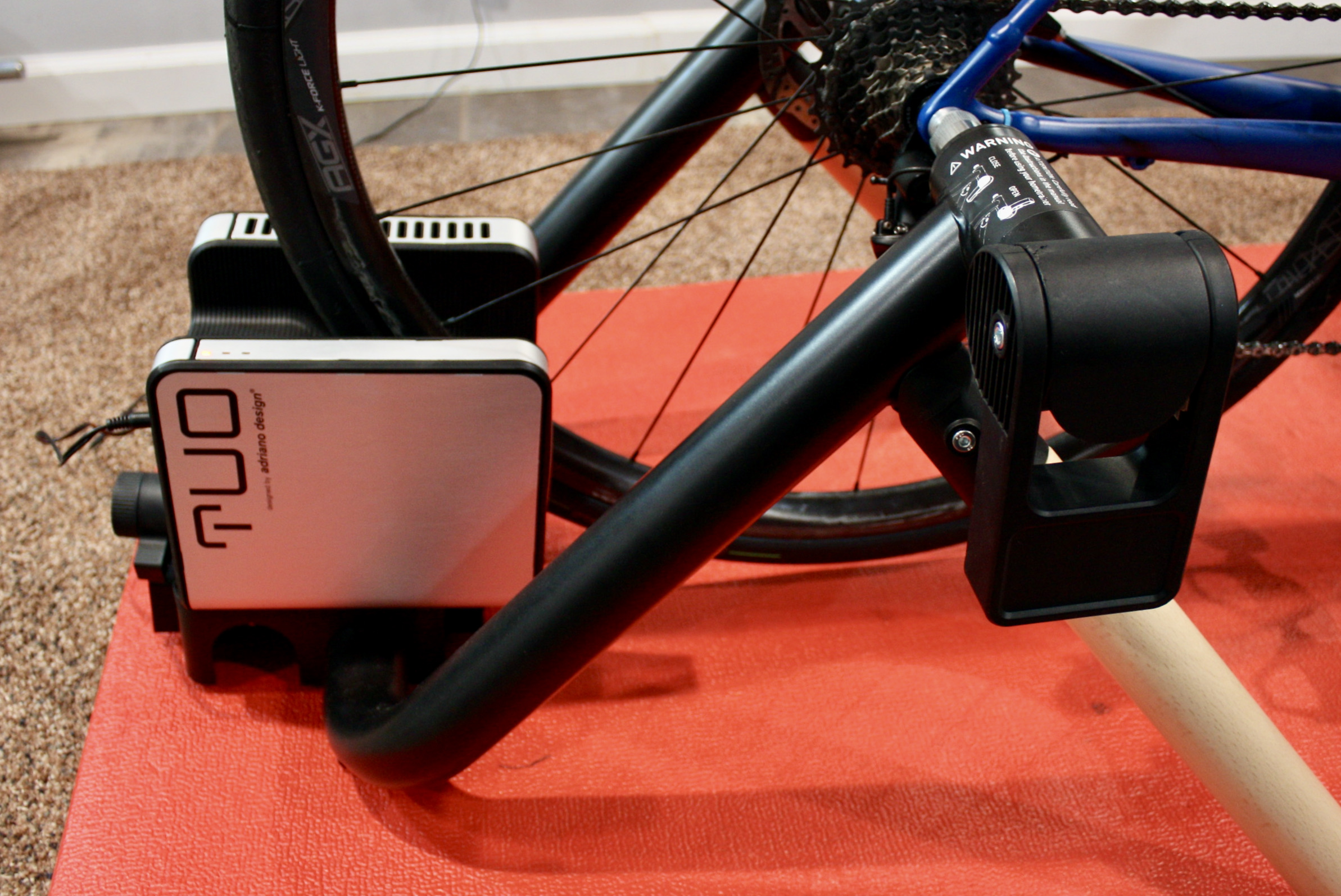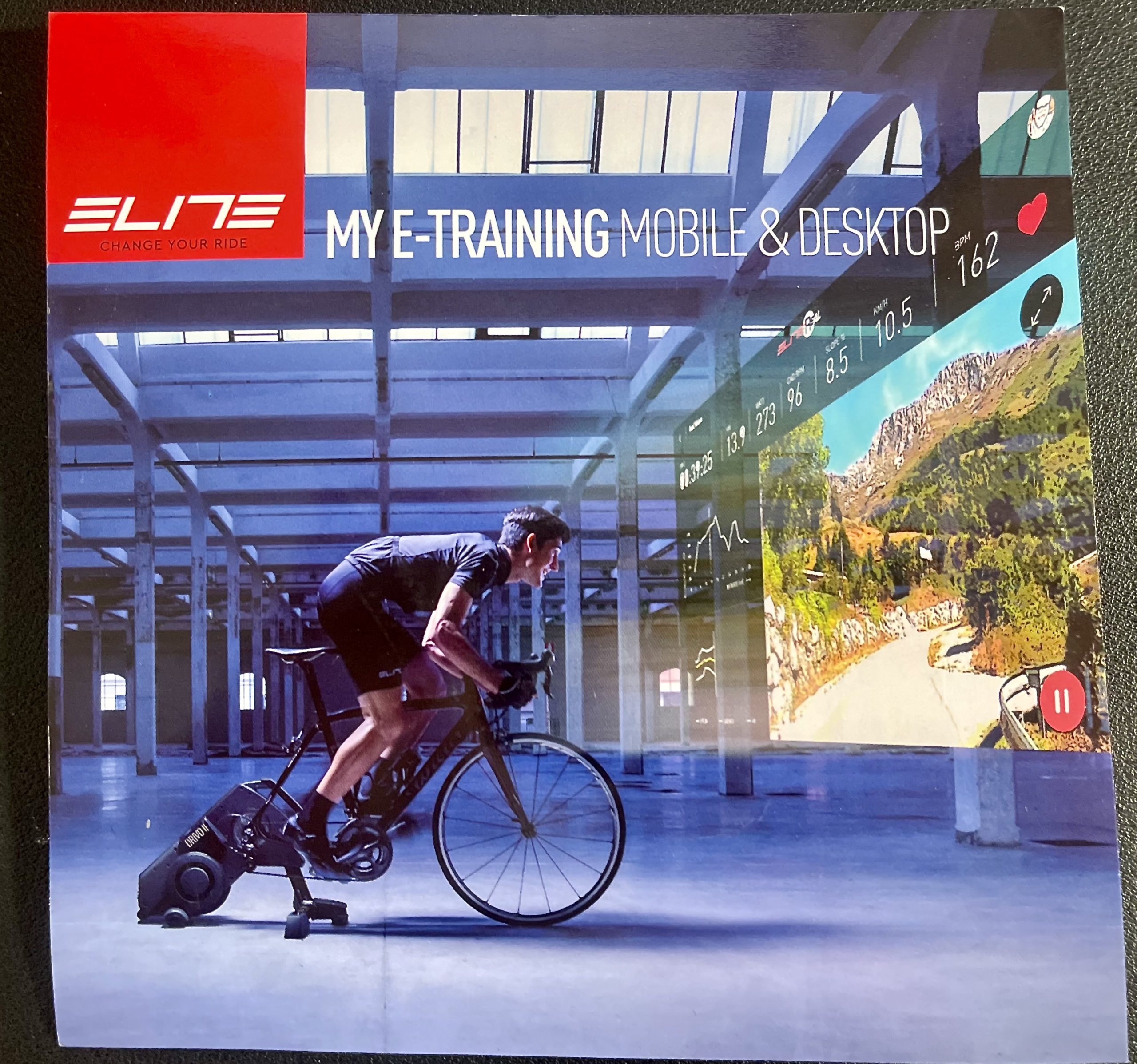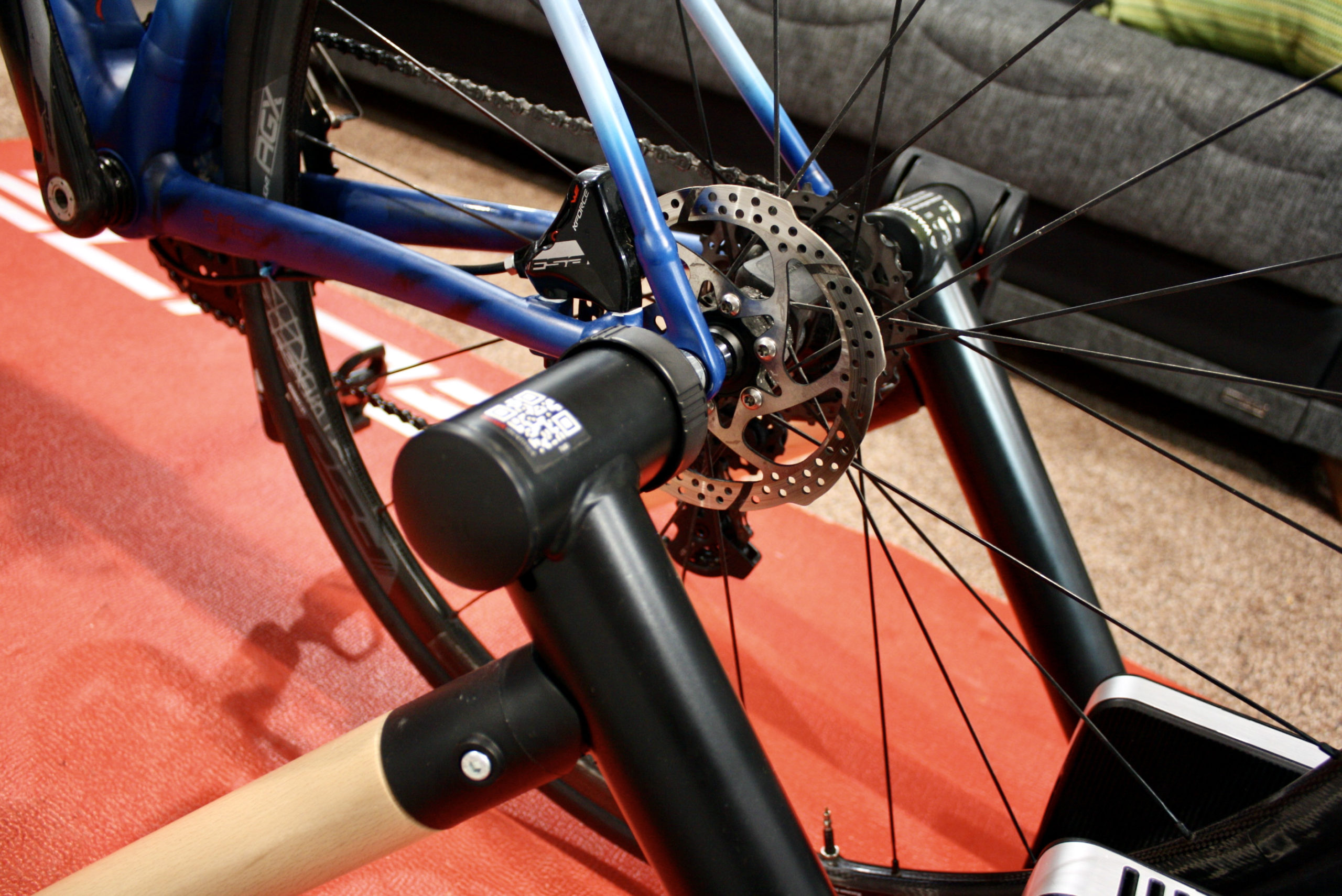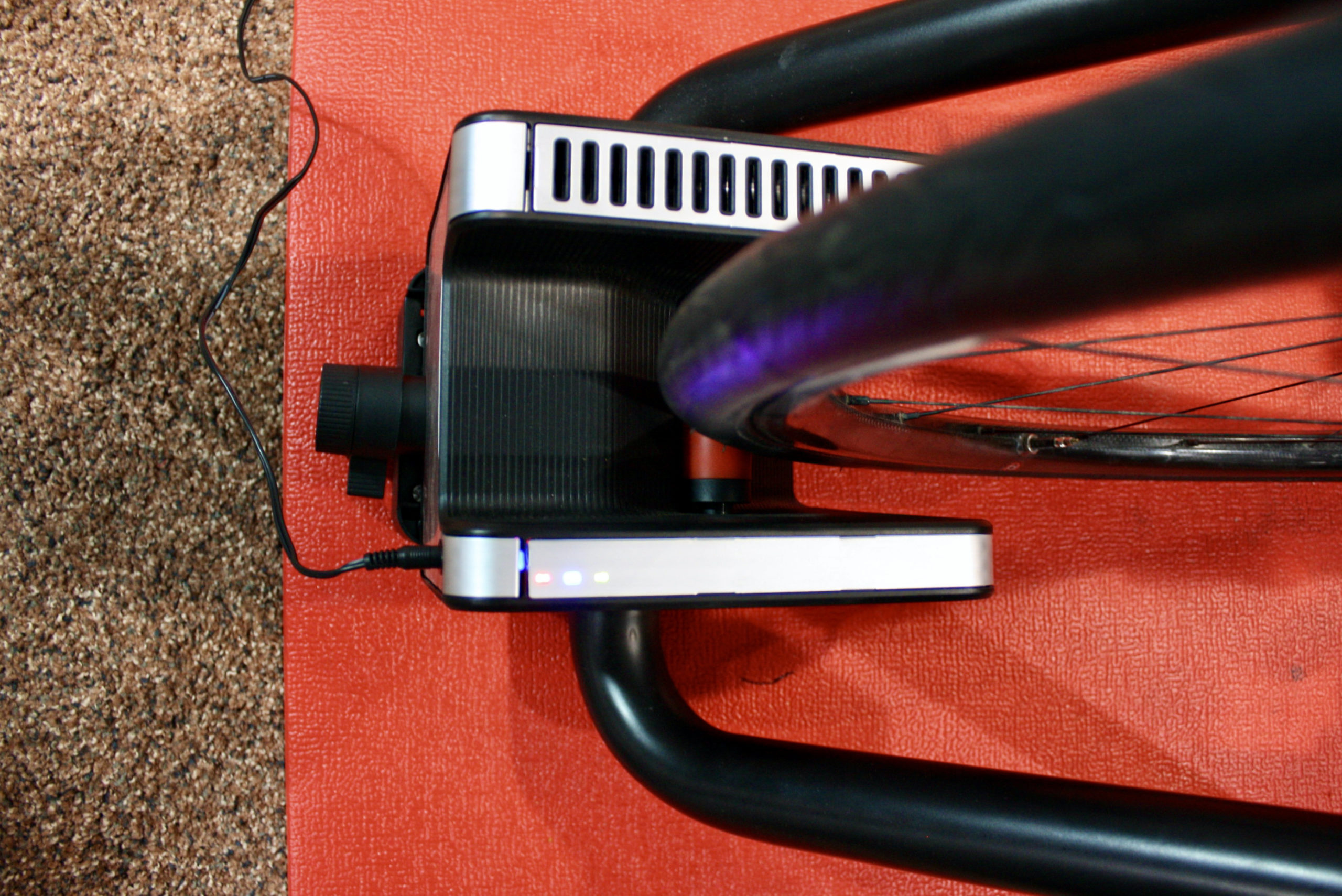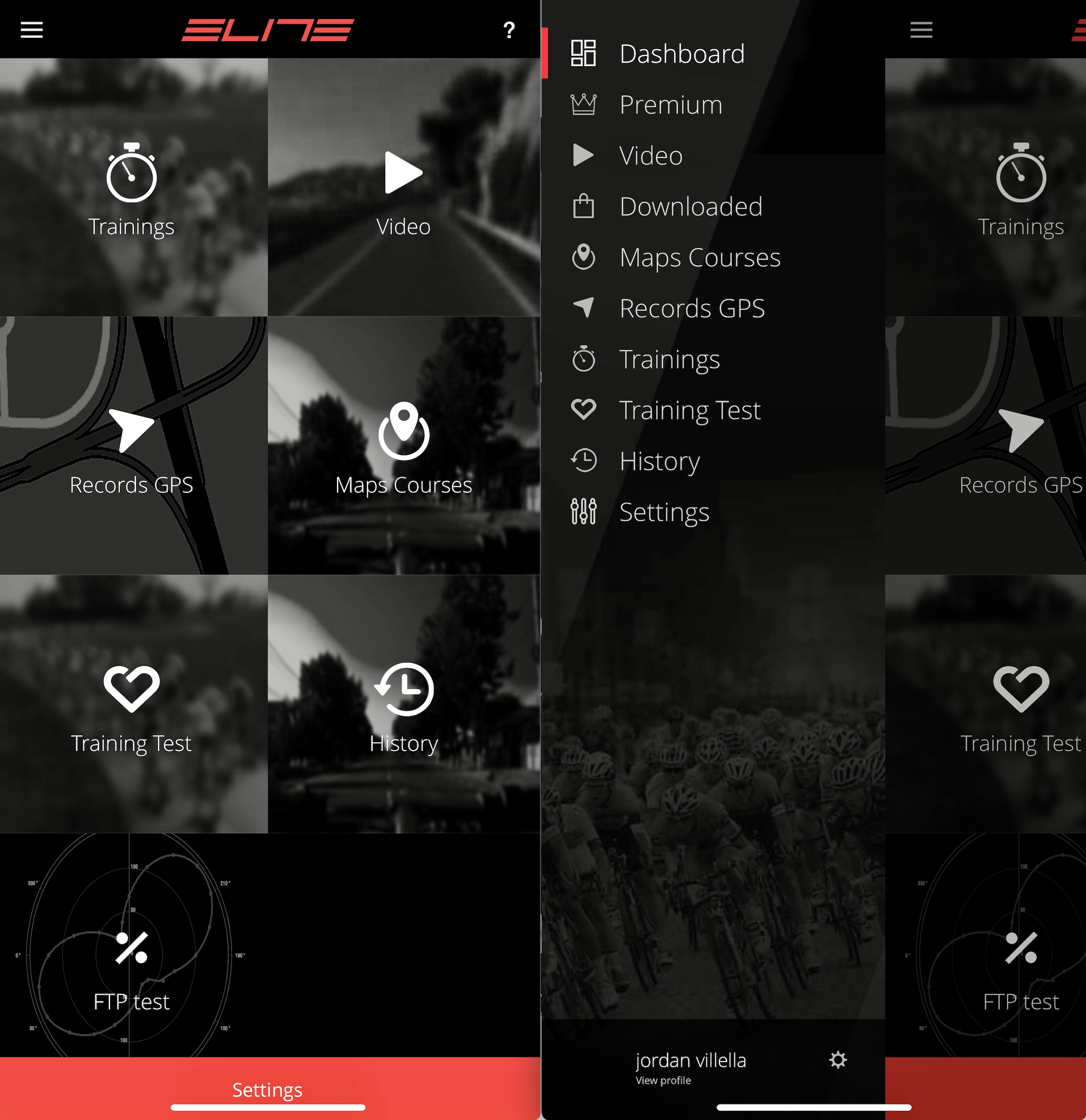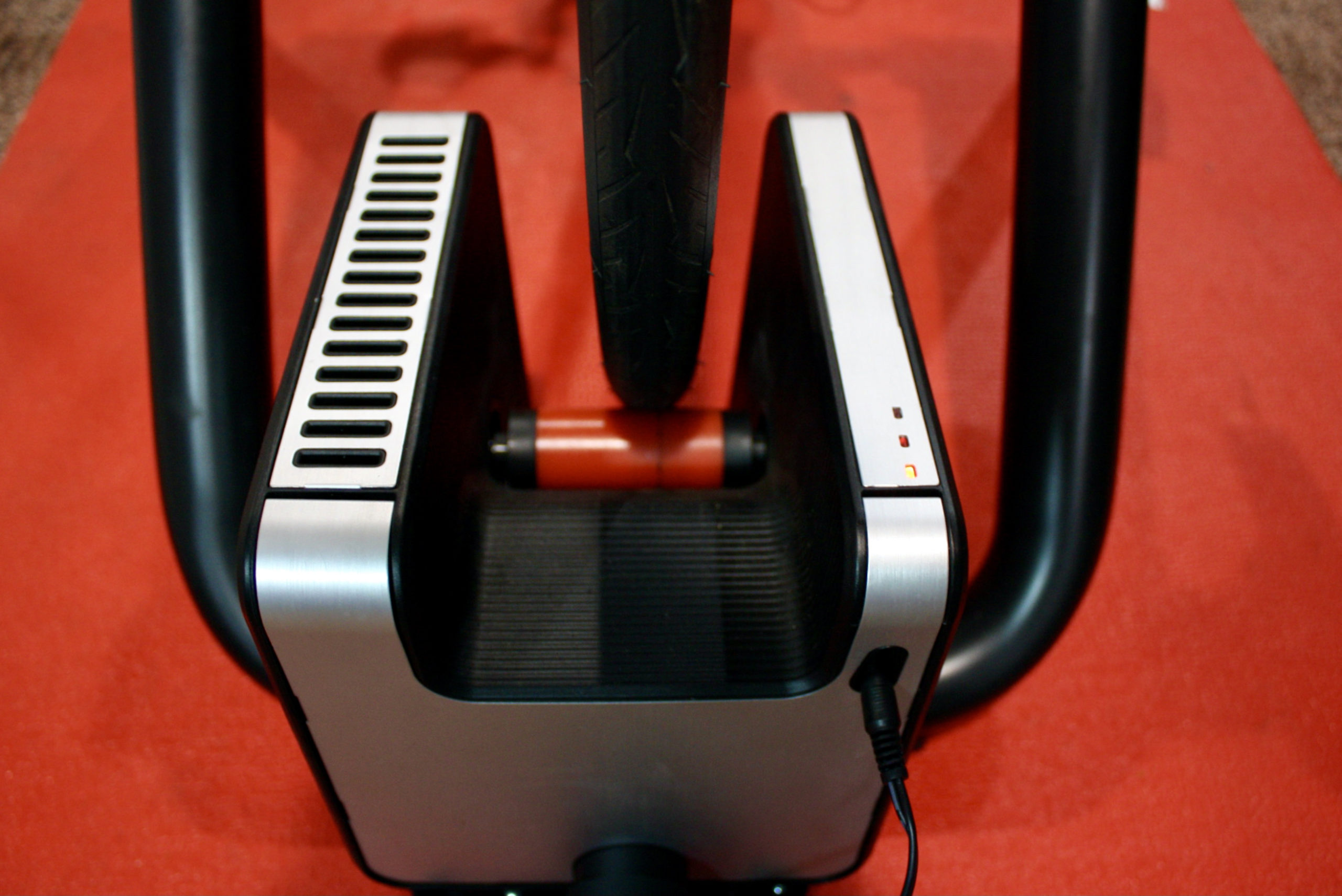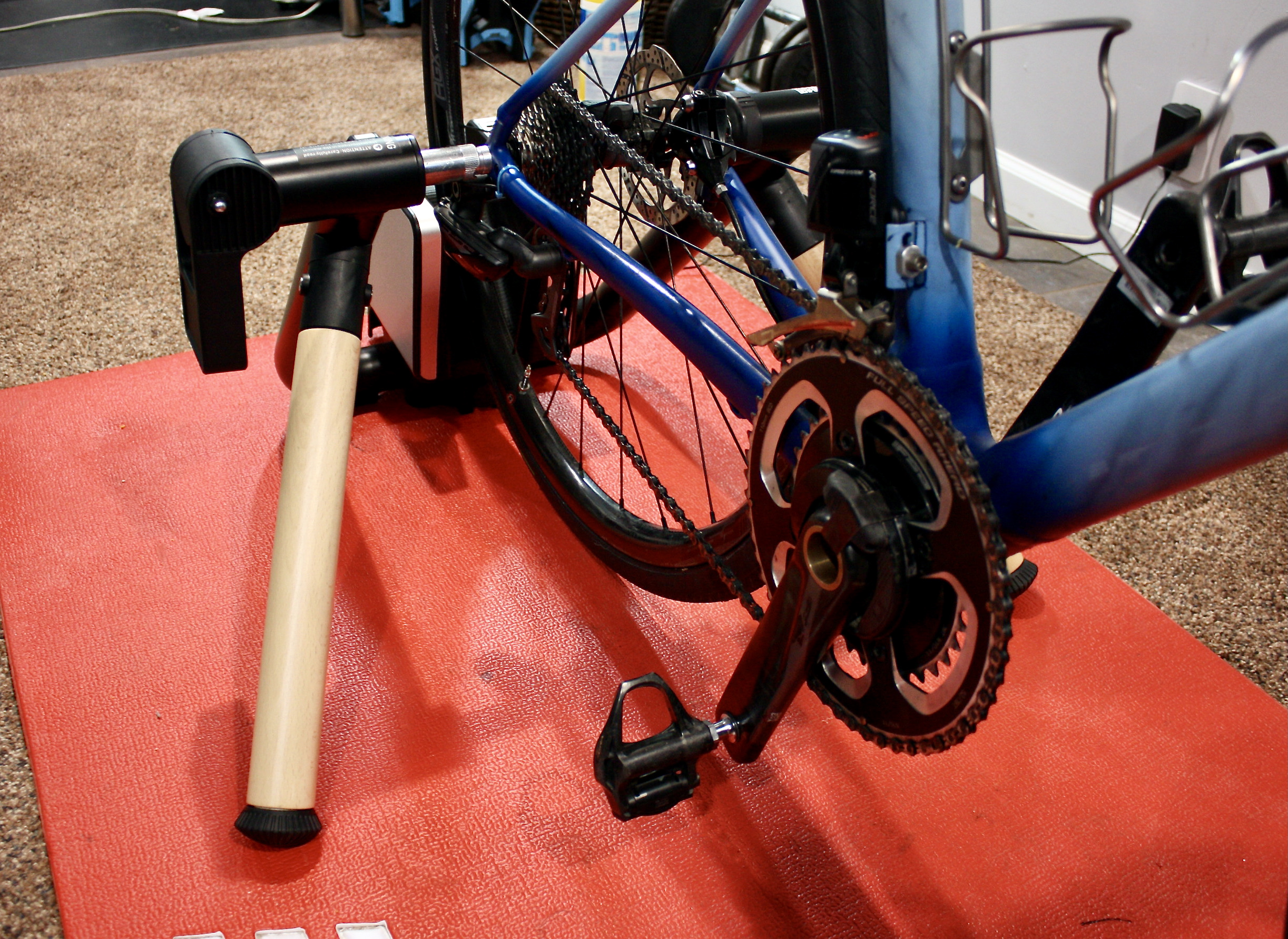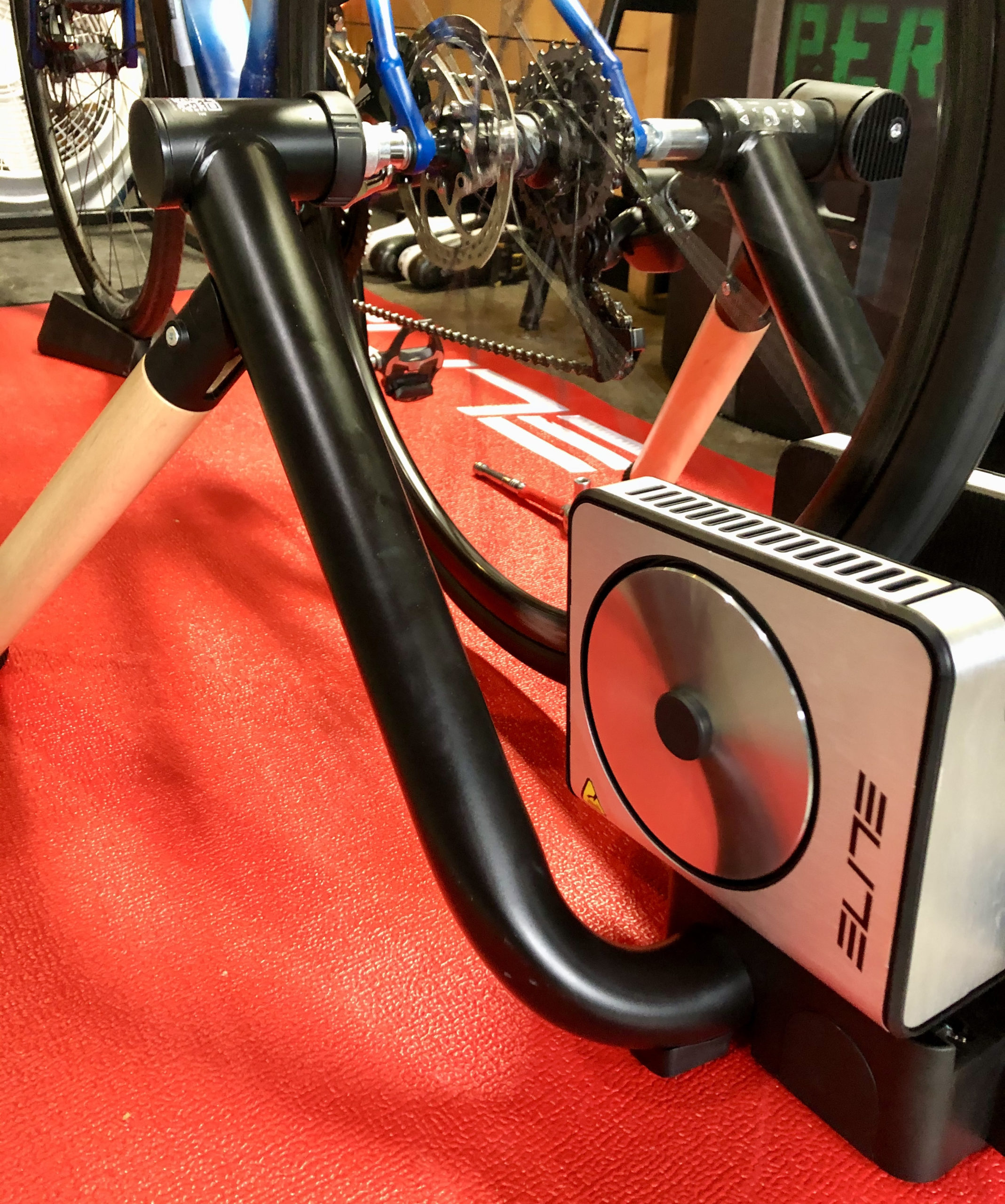Launched at Eurobike 2019, and only recently available to the masses, Elite’s Tuo wheel-on smart trainer looks more like modern art than a piece of fitness equipment. Lovingly referred to as “the Toaster” (one look and you can see why), this trainer is unique and looks to set a new standard for wheel-on smart trainers.
What is a wheel-on trainer?
The two most popular styles of indoor trainers are direct drive and wheel-on. With direct drive, you take the rear wheel off and the trainer takes its place. The bike attaches to the trainer just like a rear wheel and uses the cassette on the flywheel as a means for pedaling. Wheel-on trainers keep the bike completely intact so it attaches to the trainer without having to remove any wheels. Resistance comes from the contact of the rear tire and the roller of the trainer.
Why a wheel-on trainer?
Wheel-on trainers are less common since direct-drive technology started to dominate the scene, but they have a lot of benefits. For those who don’t want to fuss with taking the rear wheel on and off, or want to keep the price down, wheel-on trainers are a great option.
However, wheel-on trainers tend to quickly wear through rear tires, unless you swap out for a tire that is trainer-specific. Also, they tend to be noisier due to the tire-on-drum friction, which can also be prone to slippage during intense efforts. Due to the usage of your rear tire as the friction element, you also have keep the rear tire properly inflated, which is not the case with a direct-drive trainer. Wheel-on trainers also usually clamp down over top of the quick release skewer, or require a special axle, which tend not to be as secure as a direct-drive trainer.
What makes the Elite Tuo different?
What separates the Elite Tuo from others in the genre is accuracy (for a wheel-on trainer) and the aesthetics (it looks like a piece of furniture and not a trainer). The Tuo comes after indoor racing, and smart trainers had time to settle into settled formats so the company could better address key factors to achieve success in the virtual world.
The Elite Tuo’s mission is to provide an interactive indoor riding experience on par with direct trainers, at a lower price. The Tuo generates resistance with a magnetic system and connects wirelessly to your computer, phone, or tablet — automatically adjusting resistance to simulate a course or workout.
One of the advantages of the wheel-on trainer style is that the design is compact, and the Tuo is no different. The resistance unit is highly designed, and from the side, looks nothing like a training tool. Held sturdy by beechwood legs, this trainer is more of a conversation piece than gear you need to store away after a workout — and at $580, it’s priced to be competitive with both wheel-on and direct-drive models.
Elite Tuo Trainer Specs
- Max Slope: 10%.
- Max Power Output: 1300 watts
- Power Accuracy: +/-5%.
- Axel Compatibility: 130 and 135mm quick release, 12x142mm, and 12x148mm included
- Sensor Compatibility: Bluetooth and ANT+ FE-C
- Metrics: Transmits power, speed, and cadence
- Price: $580.00
- Availability: Now
Trainer setup
I’m usually OK at setting up new equipment, but the Tuo threw me for a loop. A massive instruction manual and complicated setup instructions took me by surprise. I followed the instructions – so I didn’t install anything improperly, but in the end, it was total overkill.
The general setup wasn’t complex, but the massive booklet made the process overly complicated. The explanation of terms is beyond what is actually needed and could easily frustrate or overwhelm first-time smart trainer users.
Once I installed the alloy resistance unit to the frame (and after fighting with the screws and washers for a bit), I installed my bike. At first, I installed my ‘cross bike on the unit with a smooth 35mm tire, hoping to take advantage of the ability to keep my training wheelset on. When trying to engage the resistance roller, I noticed that the tire was too big for the default “Road Channel” (the one closer to the front of the bike), and I had to switch to the secondary “MTB Channel.” After taking the unit apart again and reinstalling the resistance unit, I installed my bike. At this point, I noticed that the tire was not engaging properly on the roller. This time the wheel was too far from the roller and slipping at the tightest setting of the resistance knob.
So, I threw out the idea of keeping my wheels on the ‘cross bike and reached for the road machine. Once again, I took the unit apart, installed the resistance unit on the Road Channel, and moved on. I compromised and installed my road bike with 28mm tires on the Tuo. This size tire is the sweet spot, and I had zero problems getting the unit to reach for calibration.
Calibration
After the build, I was prepared for the long haul on the calibration process of the Tuo. I downloaded the Elite app and it quickly paired with the trainer and updated the firmware up to date, good to go.
The unit has a basic calibration protocol and a solid maintenance plan for keeping it tidy and within the promised tolerances. Elite asks that you pump your tire up to 110psi and warm up the trainer for about 10-15 minutes. You then get off the bike and adjust the contact with the tire and rubber roller wheel. At this point, you adjust the connection, so the tire and roller wheel are just touching without the engagement lever thrown. Once you’re satisfied with the contact, engage the lever and check for max tire and wheel connection. Now you’re all set to perform a calibration roll-down. I found that the one available through Zwift works the best for virtual riding and programmed interval sessions.
To stay in 5% power accuracy and calibration, Elite asked that you maintain the 110psi pressure in the tire contacting the roller — A relatively simple and easy way to keep on top of the calibration and consistency of the trainer.
Power accuracy
This is the place where I expected to see a big difference between the direct-drive and wheel-on trainers. Past experience has led me to find wheel-on trainers less accurate and finicky when it comes to consistency.
After performing the Zwift power calibration and keeping the tire at a topped-off 110 psi, I found the Tuo surprisingly (only because of my past experience) accurate. The product verbiage claims 5% accuracy, but I found the readings on par with my crank-based power meter and my direct drive trainer.
The ride
My first rides on the Tuo were on Zwift, using a programmed workout that I perform frequently. The unit paired quickly and reacted to the programmed power fluctuations, but there was a slight lag for the higher power efforts.
As for ride feel and sensation on the bike – the Tuo has a great “real life” ride. I’m guessing this comes from the rear wheel being attached. Either way, the sensation is close to real life, and I enjoyed the trainer’s feedback. The one difference is the amount of sound that comes from the trainer. Now, I’ve trained on a direct-drive trainer for some time now, so my view could be tainted a bit. But the Tuo was a bit louder than I was anticipating. However, for the record, the noise level is on par with most wheel-on trainers currently on the market.
As for racing, climbing, and full-gas efforts, the Tuo offers a great starting point but falls short on the punchy and uber steep sections of terrain. I attribute this to the roller and tire interface. No matter which tire I used, I would still get slippage on high torque sprints and grinding climbs. As for mid-raged, continuous power, the Tuo works exceptionally well. Only the sharp, punchy efforts seem to slip the wheel.
I found the power output to be very accurate following the Elite tire pressure protocol. From a cold (dawn patrol style) ride, the unit needs a little time to “warm-up,” but so do I. Basically, the power data seems to be more dependable and accurate after a 10 minute warm-up for the unit. I noticed a slight fluctuation/discrepancy in power between my FSA PowerBox and the Elite Tuo, but only for the first couple of minutes of winter basement training. After we both warmed up, the power was right on the money.
In regard to real-life feel, the Tuo has it. The unit allows the rider to rock a bit side to side, and the tire moves slightly on the roller wheel. The tire doesn’t slip, mind you, only rolling side to side slightly, granting some excellent hip freedom on the bike.
The virtual riding sensations are on par with some of the top-tier direct-drive trainers I’ve ridden, and compared to the premiere direct-drive projects, the Tuo only falls short on super steep simulated hills and punchy sprint efforts.
Elite Tuo: Final thoughts
For a wheel-on trainer, with the appearance of a modern art piece, the Elite Tuo is beyond the expectation of a $580 trainer. The unit performs better than some direct-drive units, and the power accuracy sets a new bar for wheel-on trainers. The unit is louder than a direct-drive unit, but that is par for the course, especially when you add programmed resistance to the equation.
The Elite Tuo has redefined for me what a wheel-on trainer can do with accuracy and aesthetics. I hope to see more like this from Elite — especially in the affordable rage.

